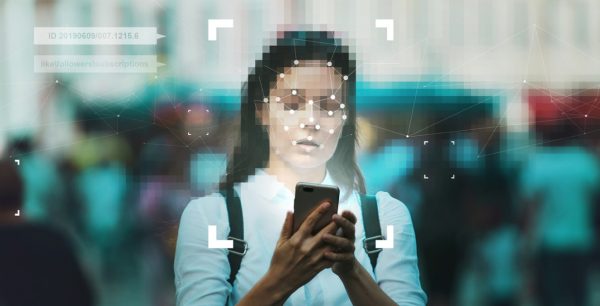What Is Digital Forensics?
Ever wonder how investigators solve cybercrimes? Or maybe about the tools and techniques used to uncover the truth behind a digital breach? The answer is digital forensics, a critical branch of cybersecurity that deals with the recovery and investigation of material found in digital devices. From cybercrimes to corporate espionage, digital forensics plays a pivotal role in today’s tech-driven society. While digital forensics is typically performed by law enforcement and security professionals, some open-source and easy-to-use options are available for consumer purposes but with limitations
In this article, we will delve into the core aspects of digital forensics, how you can apply them, and explore some tools you can use. Whether you are a budding cybersecurity enthusiast or just curious about this intriguing field, read on to gain valuable insights.
Digital Forensics and Its Role in Cybersecurity
Digital forensics, sometimes referred to as computer forensics, is essentially the application of investigative techniques to digital devices and cyber scenarios. The primary goal of digital forensics is to identify, preserve, analyze, and present digital evidence. This evidence can be pivotal in legal cases, corporate investigations, and even in tracking down cybercriminals.
The realm of digital forensics encompasses an array of devices and platforms, including computers, mobile phones, cloud storage, and even social media. The rise of the digital age has made this field more crucial than ever. From financial frauds to data breaches, the need for skilled digital forensic experts is growing rapidly.
Digital forensics is intrinsically linked to cybersecurity. While cybersecurity aims to protect systems and data from cyber threats, digital forensics focuses on investigating and understanding those threats after they occur. Both fields work hand in hand to ensure a comprehensive approach to digital security.
In the event of a cybersecurity breach, digital forensic experts are often called upon to determine the root cause, assess the extent of the damage, and gather evidence for legal proceedings. Their findings not only help in catching the perpetrators but also in improving cybersecurity measures to prevent future incidents. This symbiotic relationship underscores the importance of digital forensics within the broader context of cybersecurity.
Moreover, cybersecurity digital forensics is not just about reacting to incidents. Proactive measures, such as regular audits and compliance checks, are essential components of a robust cybersecurity strategy. Digital forensics tools can be used to monitor systems for unusual activities and potential threats, providing an early warning system that can mitigate risks before they escalate into full-blown crises.
Applications of Digital Forensics
Digital forensics is used to investigate and analyze digital evidence in various contexts, including criminal investigations, corporate security breaches, civil litigation, and incident response. The discipline encompasses several specialized fields, each focusing on specific types of digital evidence: mobile device forensics, network forensics, cloud forensics, and computer forensics. Each branch involves unique techniques and tools to investigate and collect data, playing a crucial role in modern cybersecurity and legal proceedings.
Computer forensics, often confused with digital forensics, is specifically concerned with computers and storage devices like hard drives, SSDs, and USBs. Practitioners of computer forensics employ advanced techniques to recover deleted, encrypted, or damaged files, making it critical for criminal investigations, legal disputes, and cybersecurity incident response.
Here are some ways digital forensics can play a crucial role in your personal cybersecurity:
- Identify Security Breaches. Digital forensics tools are crucial in detecting unauthorized access and activity within an organization’s network. By analyzing digital footprints left by cyber intruders, experts can pinpoint the origin, method, and extent of a breach, helping to swiftly respond and prevent further damage, ensuring robust cybersecurity measures.
- Mitigate Risks. Understanding digital forensics allows technology users to proactively address potential vulnerabilities. By conducting regular forensic assessments, you can identify weak points before they are exploited, and can implement corrective measures to fortify your digital practices against future threats.
- Incident Response. Incident response involves the immediate actions you take to contain the impact of cyber attacks, restore normal operations, and prevent future occurrences. Integrating forensic analysis into your incident response process ensures that you address the immediate threat while gaining insights into your digital vulnerabilities.
- Safeguard Sensitive Information. By monitoring and analyzing digital interactions, experts can uncover unauthorized access and prevent data leaks. This proactive approach ensures that sensitive information remains secure from cyber threats, preserving the integrity and confidentiality of organizational data.
- Maintain Compliance with Regulatory Standards. Organizations utilize digital forensics to align with cybersecurity and data protection regulations. By thoroughly investigating digital activities and ensuring adherence to legal requirements, companies can avoid penalties and maintain trust with stakeholders, proving their commitment to protecting sensitive information through robust digital forensic practices.
The Digital Forensics Mindset
While digital forensics is often associated with law enforcement and cybersecurity professionals, many of its core principles are highly relevant for individual consumers like you, both as a source of data and as a beneficiary of its results. As the usage of personal devices and online services continue to grow exponentially, consumers generate vast amounts of digital footprints that can become crucial evidence in investigations—ranging from cybercrimes to identity theft.
On the other hand, digital forensics empowers you by enhancing cybersecurity, aiding in the recovery of any lost data, and supporting legal claims in digital disputes. As awareness grows, consumers in general increasingly demand transparency, privacy, and accountability, pushing digital forensics to evolve with ethical standards and user-centered practices.
10 Digital Forensics Principles You Can Apply
Beyond specific tools and techniques, you can adopt a forensic mindset in your own digital cybersecurity habits, by being curious and methodical about unexpected digital behavior, being mindful about the triggers of an incident or cyber attacks, and valuing digital evidence just like physical evidence.
Here’s a breakdown of the key digital forensics principles that everyday users can adopt to improve personal cybersecurity, ensure privacy, and support incident response:
1. Preserving the Digital Evidence
If you suspect that your device or online account is compromised, avoid altering or deleting digital information that might be important for investigation or recovery. Also, do not install new software or change system settings if you suspect an incident. Take screenshots or save logs and emails when something suspicious occurs such as phishing or scams attacks.
2. Reporting Incidents Promptly
Quick reporting to the relevant authorities (e.g., cybersecurity teams, law enforcement, or CERTs—Computer Emergency Response Teams) ensures evidence is fresh and traceable. The range of incidents you can report can encompass anything – from cyberbullying to online scams, identity theft, and data breaches.
3. Practicing Digital Hygiene
By following good cybersecurity practices, consumers reduce their likelihood of being targeted or becoming part of botnets, which are often investigated in forensic analyses. Examples include regularly updating software; using strong, unique passwords, and enabling two-factor authentication.
4. Participating in Cybersecurity Awareness Campaigns
Educated consumers are less likely to fall victim to cyber threats and can also educate others, helping to create a digitally safe environment. Sharing verified alerts, raising awareness, and even attending workshops support the broader digital forensics ecosystem.
5. Allowing Forensic Access with Consent
In cases of compromise, you can assist by consenting to forensic analysis of your devices or accounts. This might include sharing system logs or metadata or providing consent to trace stolen data or unauthorized access.
6. Chain of Custody
If you share your device with others, document who has accessed or transferred digital data to maintain its integrity for future analysis. Keep a record of when, where, and how backups are made such as USB drives or cloud storage. You can also document the evidence in the form of emails, files, and screenshots, and store these in a secure, dated location.
7. Maintaining Data Integrity
As part of your daily digital practices, you usually ensure that the data you keep is accurate and unchanged from its original state. The same goes true as far as applying digital forensics principles goes. You can do this either by using encrypted storage or secure file transfer methods to prevent tampering, or by backing up important files or data regularly and checking that backups are identical to the originals.
8. Minimizing Contamination
In digital forensics, the experts avoid modifying or damaging digital evidence during access or analysis. In the same way, when you discover that a device or file is compromised, you need to ensure that it does not infect other devices or files by using write-protected USB drives when copying or transferring files for inspection. Better yet, you can stop using the same infected device altogether until the threat is removed. If unsure, consult a professional before running scans or cleanup tools.
9. Documentation and Logging
Digital forensics experts record all steps taken during and after an incident to ensure transparency and support recovery or investigation. In your case, you can keep a digital journal of events: the suspicious activity, to whom you reported it, and what actions were taken. If possible, save system logs and browser histories, especially when dealing with fraud or unauthorized access, and note the details of the support provider such as bank or service rep with whom and when you spoke. This will significantly help the experts when they investigate the incident.
10. Confidentiality and Privacy Protection
To protect sensitive information from unauthorized access during forensic processes, you can encrypt files and devices, and avoid sharing sensitive information or device contents unless with a trusted expert. As an added security layer, use privacy-respecting apps and services that don’t log unnecessary data.
Daily Tools You Can Use
Once you start to proactively adopt digital forensics principles to secure your digital life, you can find a range of open-source, free or easily accessible tools to help you kickstart your journey. Here are some of them:
1. Forensic Imaging Tools
These are used to create exact copies of storage devices for analysis. FTK Imager allows users to create forensic images and view disk contents without modifying the original data, while Autopsy helps users analyze hard drives and smartphones for suspicious artifacts.
2. Network Monitoring Tools
Monitoring traffic helps detect suspicious activities early. For this, you can use Wireshark, which captures and analyzes network packets to detect unusual activity.
3. Password and Credential Management
Protecting and monitoring credentials is a basic but powerful forensic principle. McAfee Password Manager generates and securely stores passwords, included in the Mcafee Total Protection suite.
4. Device and File Analysis Tools
These are used to inspect files, metadata, and logs on personal systems. Event Viewer is a utility tool in the Windows operating system that displays a log of significant system events, errors, and security-related activities. Mac users can use Console, also a utility application that displays log messages and system reports for troubleshooting and monitoring the machine’s performance.
5. Disk and Data Recovery
Many free or open-source tools can be used to recover deleted files, potentially useful for evidence retrieval. Among these are Recuva, a Windows-specific software that recovers accidentally deleted or shift-deleted important files as well as emptied recycle bin. PhotoRec recovers lost photos, videos, and other media files from hard drives, memory cards, USB drives, and other storage devices.
6. Security Suite Integration
Your device likely has built-in reporting and logging features for reviewing suspicious activities or alerts. These are useful for both proactive defense and post-incident analysis. Meanwhile, cybersecurity providers like McAfee may not be digital forensics investigators, but we focus on providing cybersecurity solutions such as antivirus software, threat detection, and data protection tools – the first line of defense against cyber threats. Take advantage of McAfee’s identity monitoring, firewall, and real-time scanning features, as well as WebAdvisor to protect against malicious sites and phishing links.
7. Hardware tools
Digital forensics tools are not just limited to software. Hardware tools are equally important, and here some examples:
- Write blockers – Prevent any changes to the data during the investigation process, ensuring the integrity of the evidence
- Data extraction devices – Retrieve and analyze data from electronic devices for investigation purposes
This combination of hardware and software tools enables a thorough and meticulous investigative process.
Challenges in Digital Forensics
While digital forensics is an indispensable part of modern cybersecurity, the industry faces some challenges. Here are some of them:
Rapid Pace of Technological Change
New devices, operating systems, and applications are constantly being developed, introducing new challenges for forensic investigators. Staying updated with these rapid advancements requires continuous learning and adaptation, which can be resource-intensive for digital forensics experts.
Encryption Technologies: A Double-Edged Sword
While encryption is crucial for protecting data, it also makes it more difficult for forensic experts to access and analyze information. While encryption can shield sensitive information from unauthorized access, it also requires digital forensics teams to use more advanced tools and techniques to decrypt and examine potentially vital evidence without compromising data integrity.
Complexities of Cloud Storage
The increasing use of cloud storage means that data might be scattered across multiple locations and jurisdictions, complicating the investigation process. Digital forensics professionals must work closely with cloud service providers and adhere to varying legal constraints, making the entire process far more intricate and time-consuming.
Volume of Data to be Analyzed
With the proliferation of digital devices, the amount of data generated every day is staggering. Sifting through this vast quantity of information to find relevant evidence can be like searching for a needle in a haystack. Highly skilled experts will need to employ sophisticated tools such as advanced analytics and automation tools to manage and analyze large datasets efficiently.
Legal and Ethical Considerations
Investigators must navigate complex legal frameworks to ensure that their methods are compliant with laws and regulations. They must also be mindful of ethical issues, particularly concerning the privacy and rights of individuals whose data is being examined. Balancing the need for thorough investigations with respect for individual privacy is a delicate and essential task for cybersecurity digital forensics professionals.
The Future of Digital Forensics
The future of digital forensics is both exciting and challenging, driven by advances in technology and the evolving landscape of cyber threats. One emerging trend is the increased use of artificial intelligence (AI) and machine learning in forensic investigations. These technologies have the potential to significantly enhance the speed and accuracy of data analysis, helping experts to identify patterns and anomalies that might be missed by traditional methods.
Blockchain technology is another area that holds promise for digital forensics. Given its inherent transparency and immutability, blockchain could be used to create tamper-proof records of digital evidence, enhancing both its reliability and its credibility in legal contexts. This could be particularly useful in cases involving financial transactions, where blockchain can provide a clear, unalterable record of events.
The rise of the Internet of Things (IoT) also presents new opportunities and challenges for digital forensics. With a growing number of interconnected devices, each capable of generating vast amounts of data, forensic experts will need to develop new techniques and tools to effectively investigate IoT-related incidents. This will require ongoing research and collaboration across multiple disciplines, including cybersecurity, data science, and legal studies.
Moreover, the continuing evolution of cyber threats means that digital forensics will need to remain agile and adaptable. Cybercriminals are becoming more sophisticated, employing advanced techniques to cover their tracks and evade detection. As such, the field of digital forensics must continually advance, staying one step ahead of those it seeks to outsmart.
Conclusion
In summary, digital forensics is a dynamic and essential field within the broader context of cybersecurity. Whether it’s identifying the source of a data breach, gathering evidence for legal proceedings, or improving security measures, digital forensics tools and techniques play a critical role. The processes involved are intricate and demanding, requiring a high level of expertise and a robust toolkit.
Despite the challenges posed by rapidly evolving technology, the future of digital forensics is bright, with new advancements promising to make investigations more effective and efficient. From artificial intelligence to blockchain and IoT, the next frontier of digital forensics is set to redefine the way we approach cyber investigations.
Whether you are a budding cybersecurity enthusiast or a seasoned professional, understanding the principles of digital forensics is and the tools involved can provide invaluable insights into this fascinating and crucial field. As we move further into the digital age, the importance of skilled digital forensic experts will only continue to grow.

 Home
Home










